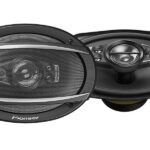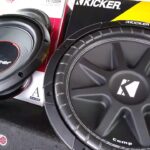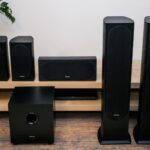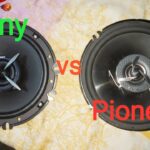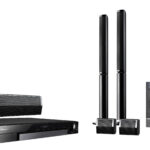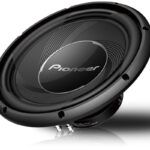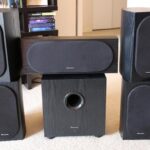A Bluetooth speaker is a wireless device that can play audio from smartphones, tablets, laptops, or other Bluetooth-enabled devices. It usually has a rechargeable battery that lasts several hours of playback. To ensure the battery’s longevity and performance, it’s important to know if the Bluetooth speaker is fully charged. It depends on the model and brand of the speaker.
Some common techniques include observing the LED indicator:
- Check the LED indicator: The LED light may change color, blink, or switch off when the battery reaches full charge. For instance, JBL speakers are equipped with a white LED light that extinguishes once the battery is fully charged.
- Battery icon: The icon may fill up or show 100% when fully charged.
- Voice prompt: Says when your battery is fully charged.
Charging Basics Information :
Different types of charging ports and cables
Bluetooth speakers typically use a micro-USB port for charging. Some newer models may use a USB-C port. The charging cable with your speaker will be the correct type for the port on your speaker.
Recommended charging time
The recommended charging time for a Bluetooth speaker will vary depending on the speaker’s battery capacity. However, most speakers should be fully charged within 3-4 hours.
Potential risks of overcharging
Overcharging a Bluetooth speaker can shorten the lifespan of the battery. It is best to unplug your speaker when it is fully charged.
Here are some additional tips for charging your Bluetooth speaker:
- Use the charging cable that comes with your speaker.
- Avoid using a power outlet that is not grounded.
- Only leave your speaker charging for as long as necessary.
By following these tips, you can help to extend the lifespan of your Bluetooth speaker’s battery.
Different Charging Options: Exploring Spare Batteries and Mains Adaptors
Bluetooth speakers can be charged in several ways, each with its advantages and disadvantages:
- Mains Adaptor: The traditional and quickest method uses a USB cable to connect the speaker to a power outlet. However, it requires access to an outlet.
- Power Bank: A portable charger that can charge various devices, including Bluetooth speakers. It’s handy for charging on the move, but it might take longer than a mains adaptor.
- Laptop: By connecting the speaker to a laptop or another device with a USB port, you can conveniently charge it if you’re already using it. However, it might take longer than a mains adaptor.
- Car Charger: This small device plugs into your car’s cigarette lighter socket, allowing you to charge your speaker while driving. It might take longer than a mains adaptor.
- Wireless Charger: Bluetooth speakers can be charged wirelessly on a charging pad. While convenient, this method is less common.
Each option has its pros and cons:
- Mains Adaptor
- Pros: Fastest charging time, most reliable
- Cons: Requires access to an outlet
- Power Bank
- Pros: Portable, convenient
- Cons: It might take longer to charge
- Laptop
- Pros: Convenient if you’re already using your laptop
- Cons: Might not be as quick as a mains adaptor
- Car Charger
- Pros: Convenient for charging while driving
- Cons: Might not be as quick as a mains adaptor
- Wireless Charger
- Pros: Convenient, no wires needed
- Cons: Not as common
Mains adaptors are the fastest way to charge a Bluetooth speaker due to their higher voltage and amperage, allowing for quicker battery charging.
Consider the speaker’s compatibility with different chargers when choosing an alternative charging method.
Some speakers only support specific chargers like wireless ones. Also, ensure the charger can provide enough power for the speaker’s battery.”
Maximizing Battery Life:
Maximizing the lifespan of your Bluetooth speaker’s battery: Tips and tricks
To get the most out of your Bluetooth speaker’s battery, here are some tips you can follow:
- Store it correctly: When not in use, it’s best to keep your speaker in a location that is cool and dry, and avoid subjecting it to direct sunlight or extreme temperature conditions..
- Lower the volume: The louder the volume, the more battery power your speaker will consume.
- Disable EQ settings: Equalizer settings can also use your speaker’s battery.
- Turn off LED lights: If your speaker has LED lights, switch them off when not in use.
- Keep the firmware updated: Firmware updates often include improvements to power efficiency.
These tips can help you preserve your Bluetooth speaker’s battery life and make your device last longer.
How to Determine if Your Speaker is Fully Charged
Here are a few ways to check the charge status of your speaker.
- Indicators on the speaker: Many speakers have LED indicators that light up to show different charge levels. For example, a speaker might have 4 LEDs, representing 25% of the battery charge. When the speaker is fully charged, all 4 LEDs will be lit.
- Companion apps or device notifications: Some speakers have companion apps that monitor battery status. You can also get alerts on your phone from these apps when your speaker needs to be charged.
- Manual methods: If your speaker has no indicators or companion apps, you can use manual methods to check the charge status. One way to do this is to check the voltage readings of the battery. A multimeter can also help you measure the voltage of the battery.
The best way to check your speaker’s charge status depends on your speaker model.
Time Frame for Your Speaker
The charging time for your speaker will vary depending on the model, battery capacity, and charging method. However, most speakers generally take 3-4 hours to charge fully.
Some speakers have quick-charging technologies that can reduce the charging time. For example, the JBL Charge 4 can be charged 50% in just 1.5 hours using the included USB-C cable.
Your speaker’s optimal positioning or placement during charging will also affect the charging time. It is best to place your speaker in a cool, dry place away from direct sunlight.
You can also use fast-charging USB ports or wall adapters to reduce the charging time for your speaker. However, make sure that the fast-charging adapter is compatible with your speaker.
Here are some additional tips for charging your speaker:
- Always unplug your speaker when it is fully charged.
- Do not leave your speaker charging overnight.
- If you will use your speaker for a short time, it is best to store it with a partially charged battery.
Final Thoughts
You can look for certain indicators to determine if a Bluetooth speaker is fully charged. Many speakers have a row of LED lights that light up and stay lit until charging is complete.
The battery status indicator on top of your product will indicate when your battery is low (for example, 2 out of 4 lights), medium (3 out of 4 lights), or full (all four lights).
Some speakers may have a single LED light with a different color to indicate the charging status.
For instance, a red light might turn on when you plug in the speaker and turn off when it’s fully charged.
Additionally, some speakers may have an associated app that tells you how much battery power you have. It typically takes about 4 hours to charge an empty battery fully.
FAQ
How to charge a Bluetooth speaker without a charger?
It depends on the Speaker model and capabilities. But Most of the time, people use a USB cable, power bank, laptop, desktop, car adapter, or even a solar charger to charge the Bluetooth speaker without a charger.
You can use an external battery pack or wireless charger as an Alternative. We remind you to check the charging capability of the device. Before using it, avoid any damage to the USB ports of both devices.
How long Does a Bluetooth speaker take to charge?
A Bluetooth speaker takes 2-3 hours to charge fully. Make sure your Bluetooth speaker is fully charged before using it.
If you see that your battery is not charging as long as before, then the battery needs to be changed or refurbished. A battery provides 10-20 hours of backup after a full charge.
How Do I know when my Bluetooth speaker is Fully charged?
The type of charging signal depends on the model of the speaker. However, some speakers have LED lights to understand the charging level of the battery.
Four lights indicate full charge, three indicate medium, and two indicate low charge.
However, some speakers may have a single LED that changes color for the battery to indicate a charging status. Example:
The battery is fully charged if you connect the speaker with a USB AC adapter via an AC outlet.
If the battery is fully charged after connecting the speaker to an AC outlet with the USB AC adapter, it turns orange and off after 1-2 minutes.
Bluetooth speaker charging but not turning on.
Check the power connection and clean the charging port if your Bluetooth speaker charges but won’t turn on.
Try a different charger or reset the speaker by holding the power button for 10 seconds. If it still doesn’t work, consider replacing the battery or contacting the manufacturer.
Bluetooth speaker charging problem
Your Bluetooth speaker isn’t charging despite trying different power sources, cleaning the port, using a different charger, and resetting it.
You suspect the battery, which is a few years old, might be the issue. If you’ve tried everything, it might be time to replace the battery or contact the manufacturer.
How to charge Bluetooth speaker with a phone
To charge a Bluetooth speaker with a phone:
- Connect it with a USB cable and plug it into a power outlet.
- Wait for the speaker to charge, which may take a few hours.
- Ensure your phone is on and unlocked, and avoid using it while charging the speaker.
- Unplug the speaker when not in use to conserve battery power.
How to charge Bluetooth speaker with a USB port
To charge a Bluetooth speaker with a USB port, you will need the following:
- Get a USB cable with a USB-A and a USB-micro connector.
- Connect the cable to the speaker’s charging port and a power source.
- If available, the speaker will start charging, and the indicator light will turn on.
- Once fully charged, the light will turn off.
Additional tips:
- Ensure the power source is on.
- Don’t use a damaged cable or an overly powerful source.
- Leave the speaker charging for a short time.

